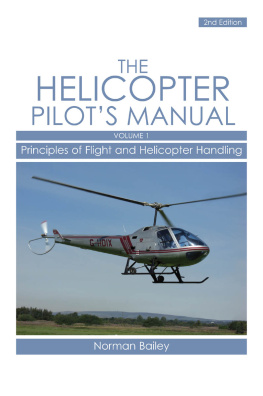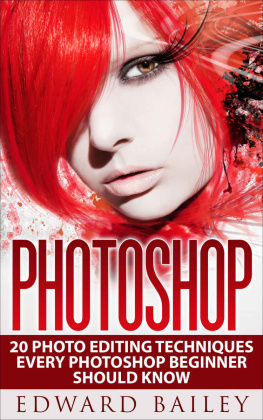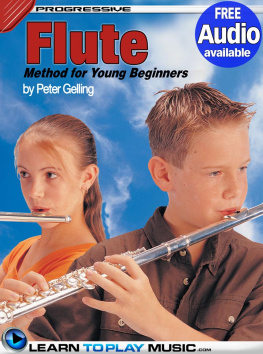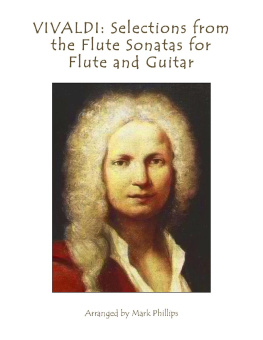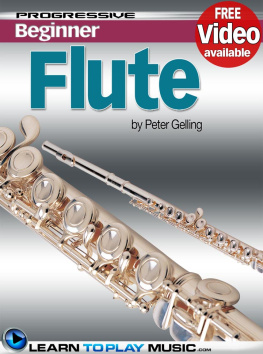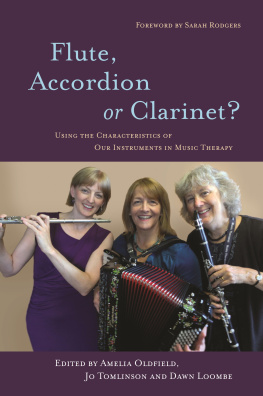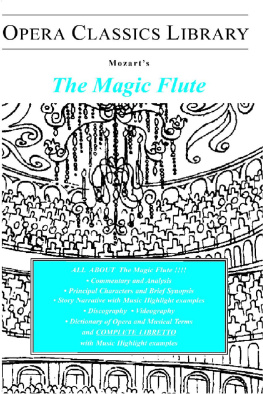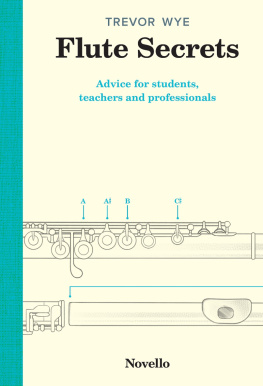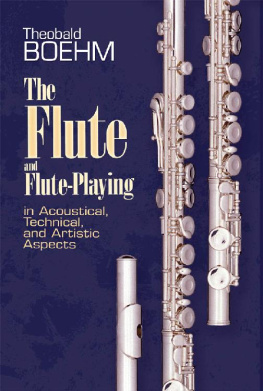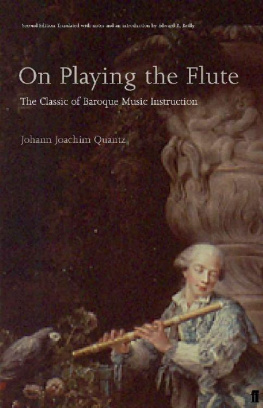Flute for Beginners
Tips and Tricks of Playing Beautiful Music Using a Flute
Copyright 2020 - All rights reserved.
The content contained within this book may not be reproduced, duplicated or transmitted without direct written permission from the author or the publisher.
Under no circumstances will any blame or legal responsibility be held against the publisher, or author, for any damages, reparation, or monetary loss due to the information contained within this book, either directly or indirectly.
Legal Notice:
This book is copyright protected. It is only for personal use. You cannot amend, distribute, sell, use, quote or paraphrase any part, or the content within this book, without the consent of the author or publisher.
Disclaimer Notice:
Please note the information contained within this document is for educational and entertainment purposes only. All effort has been executed to present accurate, up to date, reliable, complete information. No warranties of any kind are declared or implied. Readers acknowledge that the author is not engaging in the rendering of legal, financial, medical or professional advice. The content within this book has been derived from various sources. Please consult a licensed professional before attempting any techniques outlined in this book.
By reading this document, the reader agrees that under no circumstances is the author responsible for any losses, direct or indirect, that are incurred as a result of the use of information contained within this document, including, but not limited to, errors, omissions, or inaccuracies.
Table of Contents
Introduction
The flute is a dynamic and beautiful instrument played all over the world. The flute has its application in diverse facets of life like religion, culture, several genres of music, and so on. The flute can be played in different music styles like rock, jazz, and so on. And because it is so portable and easy to transport, it's no surprise many people want to learn how to play the flute.
"Flute for Beginners" is a new kind of tutor where we combine different tips and tricks to help you learn how to play the flute, and produce beautiful tones. So, if you are feeling confused about your tone, this book is for you. This book will guide beginners and intermediate players alike with the basics of playing the flute. We will teach you everything you need to know, from the basics to advanced playing strategies that will make playing the flute fun. Our main goal is to point out everything you can do better when playing the flute.
It is certainly true that a single book or a good teacher cannot communicate the true beauty and intriguing nature of playing any musical instrument, but we felt it would be valuable to compose a book that will communicate the basics of good quality flute playing thoroughly, anticipating and answering beginners' inevitable questions. In this book, we will not assume you already know anything about playing the flute, so we will teach you everything from scratch. And if you already know a couple of things about the flute, that's great as you will find many of the flute playing problems outlined in this book relatable.
How do I learn how to use this instrument? How can I improve my tone? Why wouldn't this note come out as it should? The answers to all these questions are all here in this book and many more. You may have also wondered how people can simply play the flute for hours without reading it from a music sheet and still play beautifully. Well, it might encourage you to know that there is only so much a teacher, or a book can teach you.
When learning to play the flute as a beginner, your mindset should be one of understanding the instrument rather than the sheer repetition of what is being taught. By doing so, you begin to understand melody, and in the end, replicate the melody you have in mind on the flute in real-time. Note that there are different ways you can improve your tune to play more beautifully on a flute. As such, in this book, we'll highlight the most common ways you can try to improve your tune. So, grab a cup of coffee and sit in that comfy chair as you flip through this book.
Chapter 1: Introduction to the Flute
As said earlier in the introduction of this book, the flute is a dynamic instrument played in diverse traditions, culture, religion, and so on. The flute is no new instrument known to man, as the first-ever man-made flute dated far back to over 40,000 years ago. Over the years, a different variety of flutes has been developed. As of today, there are about ten different types of flutes. This section will be looking at the most basic information about a flute every beginner should know.
Types of Flutes
The first thing to note when you're thinking about learning the flute is that there are different types of flute. Understanding the different types of flutes will help you make an informed choice of the flute to buy and practice. All flutes come with a similar hollow tube through which air vibrates and a mouthpiece where the air is directed. But each flute differs from each other in size, the number of keys, key configuration, and so many other features. Below are the ten most common types of flute:
1. Eb Flute
The pitch of an Eb flute is somewhere midway between the C flute and the Piccolo. The Eb flute is a member of the modern flute family. It is the only member of this family that is not pitched on either G or C.
2. Piccolo Flute
The piccolo flute is a miniature half-size flute that has most of the same fingering as its larger siblings. Piccolo flutes are characterized by their unique sound, high tone and are often played in solo parts of a song.
3. Fife
Fife is another small, high-pitch flute, similar to the piccolo. Fife originated in medieval Europe and are mostly used in marching bands, military units, and Fife and Drum Corps. The standard fife flute is an A-flat transposing instrument, while the marching fife is a B-flat transposing instrument.
4. Alto Flute
After the uncommon flauto d'Amore, and below the standard C flute, the alto flute is the second-highest member. Alto flutes are the third most common member of the family after the piccolo and standard C flute. Alto flutes are a transposing instrument in G, characterized by their rich, mellow tone in the lower portion of its range.
5. Flauto d'Amore
Flauto d'Amore is an uncommon member of the concert flute family pitched in Ab, A, and Bb. In size, the flauto d'Amore is bigger than the modern C concert flute but smaller than the alto flute in G.
6. Four and Eight Keyed Flute
In the 18th century, the four and eight keyed flutes quickly rose to popularity. The four key flutes are flutes with a D foot and D#, F, G#, and Bb keys. Similarly, the eight keyed flute is a flute with a C foot, and the small D#, F, G#, and Bb keys, and a long C and long F key.
7. Baroque Flute or Traverso
Baroque flutes are quite different from the modern flute as it sounds softer and gentler. Notes on the baroque flute sound crystal clear than others, like the chromatic notes Ab and Bb. Composers write songs with the baroque flute to portray a sad feeling.
8. Bass Flute
A Bass flute is a member of the flute family pitched in the key of C, or one octave below the concert flute. The bass flute plays in a range that makes it the tenor member of the flute family. And because of the extra-long tube, they are often made with a J-shaped head joint.
9. Contrabass Flute






